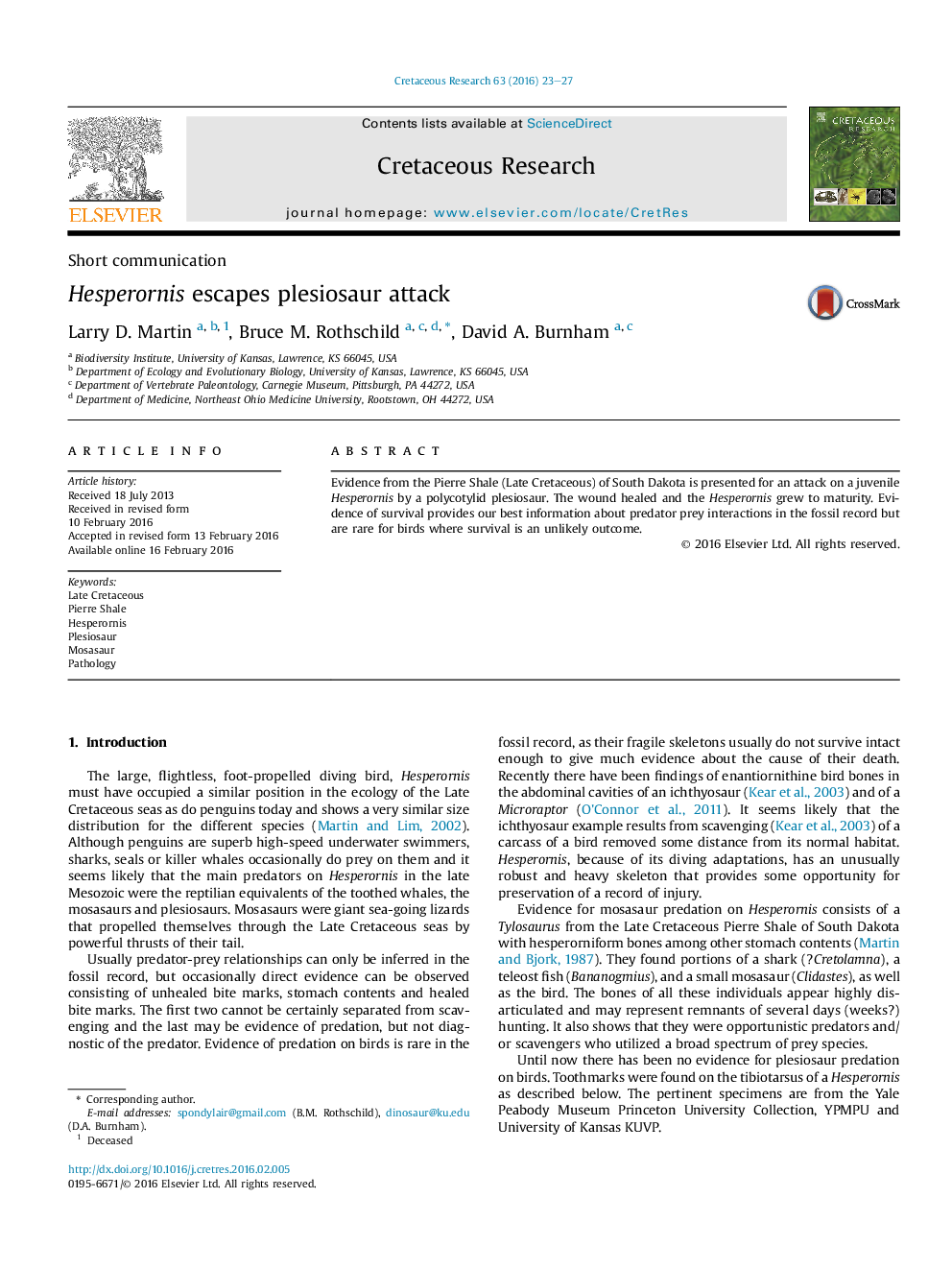| Article ID | Journal | Published Year | Pages | File Type |
|---|---|---|---|---|
| 4746667 | Cretaceous Research | 2016 | 5 Pages |
Abstract
•Predator-prey interactions have been a matter for speculation. It is rare when evidence is available to actually document such an interaction. Herein, we present documentation that a Hesperornis survived a predation effort and identify the perpetrator.•The arrows in Fig. 3A identify the longitudinal position of the bite marks, while 3B identifies their exact location.
Evidence from the Pierre Shale (Late Cretaceous) of South Dakota is presented for an attack on a juvenile Hesperornis by a polycotylid plesiosaur. The wound healed and the Hesperornis grew to maturity. Evidence of survival provides our best information about predator prey interactions in the fossil record but are rare for birds where survival is an unlikely outcome.
Related Topics
Physical Sciences and Engineering
Earth and Planetary Sciences
Palaeontology
Authors
Larry D. Martin, Bruce M. Rothschild, David A. Burnham,
